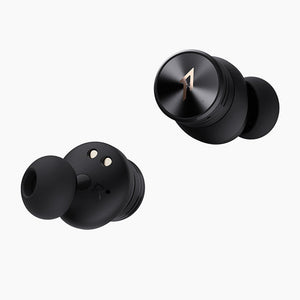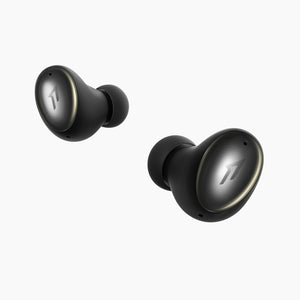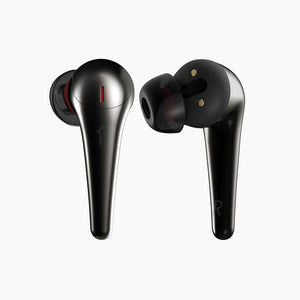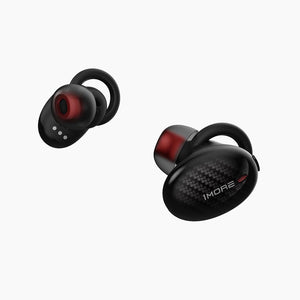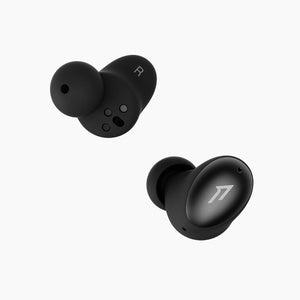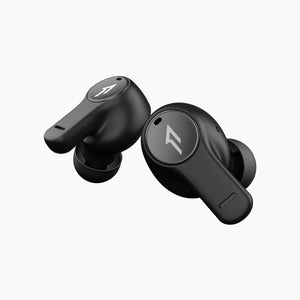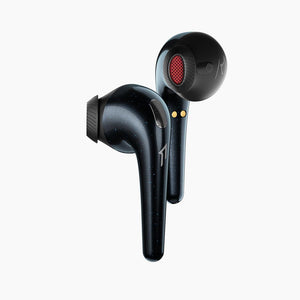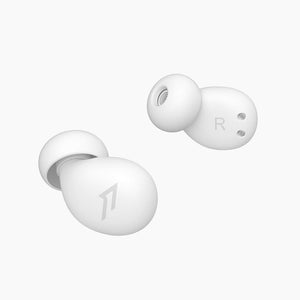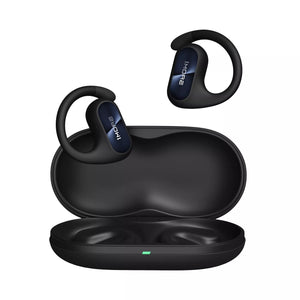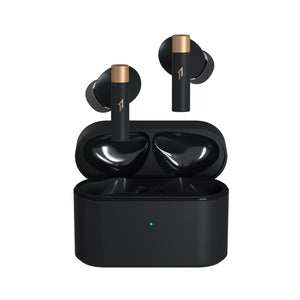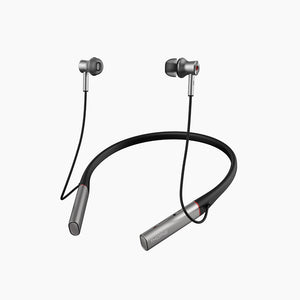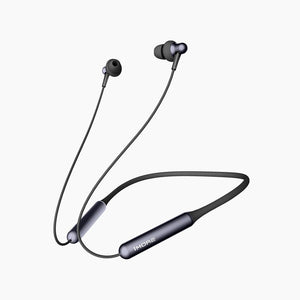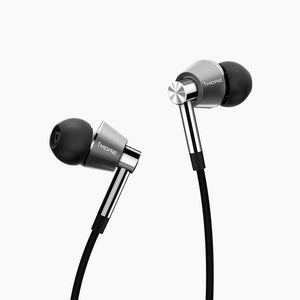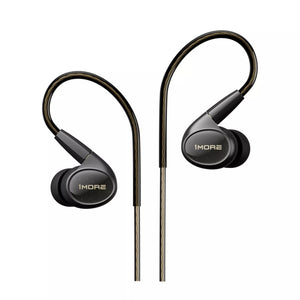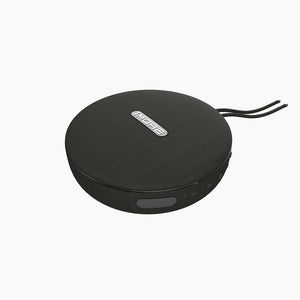NEW TO 1MORE?
Create an account to track, change or return your order with ease.
Your shopping bag is empty
A music producer’s review of 1MORE’S Triple Driver In-Ear Headphones
By: David Kellogg
The sonic quality of 1MORE’S Triple Driver In-Ear Headphones came as an utter surprise in a market where high-end multi-driver in-ear monitors have generally cost $800 and up. Recent competition in a growing market where consumers are beginning to demand the sound quality pros and audiophiles have demanded for years has brought prices down, but not this far, and not for a product this good.
Shure’s E500’s and UE’s Triple.fi 10’s are two examples of offering pro quality headphones at a lower cost. They retail respectively at $499 and $399. Here comes the boom, and not the fake boom cheap headphones give you… 1MORE’S triple drivers retail at $99! That’s less than 1/3 the cost of any other triple driver I’m aware of on the market.
Free market competition is a consumer’s dream, but this is a nightmare for the competitors. I’ve spent ample time using Shure’s E500 and UE’s Triple.fi 10’s, along with Audio Technica’s, Sony’s, and Sennhieser’s as in-ear reference monitors in various studios. 1MORE’S are simply better. They look better, they feel better, they fit better, they sound better, and they are remarkably more affordable. It’s not clear if they managed this “knock out blow” price because everything they make is from the ground up or if the competition has been obscenely padding their manufacturing costs under the false flag of “been around” branding.
My instincts tell me it’s both. I don’t think 1MORE is joining this game to please audio professionals, though they will. I think they clearly want everyone to hear what the pros hear, and more importantly to hear what artists and producers intended their fans to hear. These headphones are game changers and the fans win. Due to the low price point, convincing my artist and producer friends to listen will actually be harder, but once they do, they’ll feel the same way. I can’t wait to see my favorite musical cohort Lenny Kravitz’s expression when he’s referencing his latest mix on these while I write $99 on his lyric pad.

Out of the box, the packaging is consistent with $500 plus headphones and the design is equally elegant. Zen minimalism, modern, compact, and sexy are words that come to mind. The forged aluminum alloy casing, with a black and brushed gold color scheme, looks sleek and is extremely lightweight. The multiple ear tip sizes, five silicon and three foam, ensure the user will find their favorite comfort and sonic fit. The foam sounds a bit brighter, and the silicon adds a bit more bass. The braided black wrapped Kevlar core cable is extremely strong (tug tested), but it’s as thin as your standard headphone cable. The dual system intelligent controls and high quality MEMS microphone are independently wired to eliminate crosstalk and are fully compatible with Apple and Android. I used the controls for volume control, track switching, and answering calls on an iPhone6 and a Galaxy G5. Everything works great and voices are extremely clear on both ends for calls. Even the durable magnetic latching traveling case is smart.

Let’s talk sound. Comparing broad market priced in-ear headphones to professionally priced in-ear headphones might seem odd, but that’s how good these headphones are. Comparatively, Shure’s E500’s are generally bass heavy with an obvious high end roll off. That works for monitoring drums on stage, but it’s not how music is supposed to be heard. On the other end, UE’s Triple.fi 10’s are treble heavy, in fact a bit tinny. Generally, Ur Beats, Bose, and Sony’s in-ears are extremely bass heavy, whereas Sennheiser’s and Audio Technica’s tend to be tinny. AKG’s tend to be both bass boosted and treble heavy with lacking mids. One can’t completely make sweeping judgments because these companies all offer various models, but one thing none of the competitors offer is a flat balanced frequency response headphone that’s triple-driver accurate and pleasing to the ear, not to mention this affordable. I’ve looked at 1MORE’S spectrum analysis chart and it splays like the horizon over a calm ocean of sound. At most, there’s a gentle and desirable slope to compensate for the Fletcher-Munson curve, the natural way your ears perceive sound. If you saw the slope AKG and other headphones have you could ski black diamonds from the bass end to the high end. If you saw Ur Beat’s you would have to “bass” jump.
When other headphone manufactures have attempted to create flat frequency response in-ear monitors they generally end up with unforgiving upper mids. 1MORE solves this problem with subtle sound shaping instead of harsh cuts and boosts. They hired Grammy award winning sound designer and producer Luca Bignardi to precisely implement this balance of sonic accuracy and appeal. As far as I’m concerned, he painted the sound response for these headphones as Michelangelo painted the Sistine Chapel. I want to meet this guy, but for now, listening through “his” ears will be enough.
Balanced frequency response is better for listening and is better for you. The best way to express the physical and psychoacoustic benefits of 1MORE’S flat frequency response headphones is that they greatly reduce ear fatigue and therefore hearing damage. I’ve experienced this on a personal level since these are my new in-ear reference monitors. Bass is felt as much as it’s heard. It's more effectively represented by 1MORE’S ergonomic angled snug fit than how other headphones unnaturally boost low end. Such boosting creates ear fatigue and ultimately hearing damage. It also causes the listener to increase volume in order to seek out overwhelmed upper frequencies, particularly to hear vocals and what audiophiles call sizzle, the silky highs that make you feel like you’re right there.
This explains the nearly religious experience I had listening to 1MORE’S triple drivers for the first time. Having dedicated low end and midrange drivers with dual balanced high end armatures equals clarity and spaciousness. I thought I was listening in my own control room. It’s something I call transparency, where there is nothing between the music and your ears. For that is the goal of any great technology… to disappear.

In addition, with other headphones, the ear actually develops tolerance to overly boosted bass, which quickly cancels out the unnatural benefits of said boosting. In fact, natural frequency response headphones like 1MORE'S will give the listener an overall experience of more bass and fullness for a longer period of time, without causing ear damage. The bass stays punchy and present. Their carefully designed armatures, “from the ground up” means minimalized welding points and unnecessary connections, allow for less harmonic distortion and more accuracy. This has another positive psychoacoustic effect on the listener… a sense of hearing things live. Clean harmonics are the subconsciously heard tones that enhance a sense of reality. They add depth and space. They do what a room does to a voice or an instrument. They make it real, spacious, and 3-dimensional. 1MORE’S triple drivers are intimately clear. The voice is singing, the instruments are playing, it’s not just sound coming from tiny speakers in your ears. They bring you and the music together.
The dedicated armatures for sizzling highs seem to leave room for a more dedicated low end punch from the dynamic driver. This depth can be described by comparing modern modular speaker systems and old school stacked speakers. The triple drivers are in essence modular and spacious. They represent a colossal leap from most ear buds, one that’s even more noticeable than when you filled your living room with modular speakers and gave your stacks to Uncle Fred.
Let’s talk about kids. Because most headphone manufacturers have excessive bass boosts, your kids are listening at hazardously high volume levels to compensate for the overwhelmed mids and highs, and ultimately to compensate for low frequency ear tolerance and hearing damage. All listeners will immediately notice the qualities of 1MORE’S triple driver’s harmonic clarity and naturally balanced frequency response. They will both hear and emphatically enjoy the acoustic and psychoacoustic benefits. But for those of you who are parents there is a greater impetus… to protect your children's ears! I would endorse these headphones for that reason alone. In addition, your kids will think it's cool to have headphones that don't fake it, that don't lie, that represent their favorite artists and bands the way the artists intended. Artists will like them for the exact same reason. 1MORE is offering something unprecedented… supremely accurate and professionally balanced headphones that are elegantly designed and incredibly affordable. I want 101 more, for my family’s ears and my professional peers.
*David Kellogg has been a career sound engineer and music producer for 25 years. At various studios including his own, Droptone, he has worked with producers such as Butch Vig (Garbage, Nirvana) and artists such as Lenny Kravitz, Jimmy Cliff, Talib Kweli, and Beres Hammond.
These Swarovski Crystal Earbuds May be the Best Audiophile Valentine's Gift
Eddie Ciletti- Manhattan Sound Engineer Compares our Triple Drivers
If you think the article is helpful, we suggest you could choose to share it via
Trending Posts
1MORE EVO - True-to-Life Sound That Rivals Wired Audiophile Headphones
Jul 12, 2022
A New Firmware Update with EQ Feature for 1MORE EVO
Jul 08, 2022
The Best Headphone Gifts for Christmas 2021
Nov 25, 2021
1MORE ComfoBuds 2 Bring an Unmatched Ultra Comfortable EarBuds
Oct 13, 2021
1MORE ColorBuds 2 Bring New Meaning to Color Your Sound
Sep 22, 2021
1MORE ComfoBuds Pro Sets A High Bar For True Wireless ANC Earbuds
Sep 15, 2021
1MORE Launched ComfoBuds Z to Bring Better Sleep
Sep 09, 2021
1MORE launches ComfoBuds
Jan 14, 2021
1MORE Receives 3 CES Innovation Awards
Jan 14, 2021
1MORE Launches New Affordable True Wireless Headphones
Nov 10, 2020
Tag








